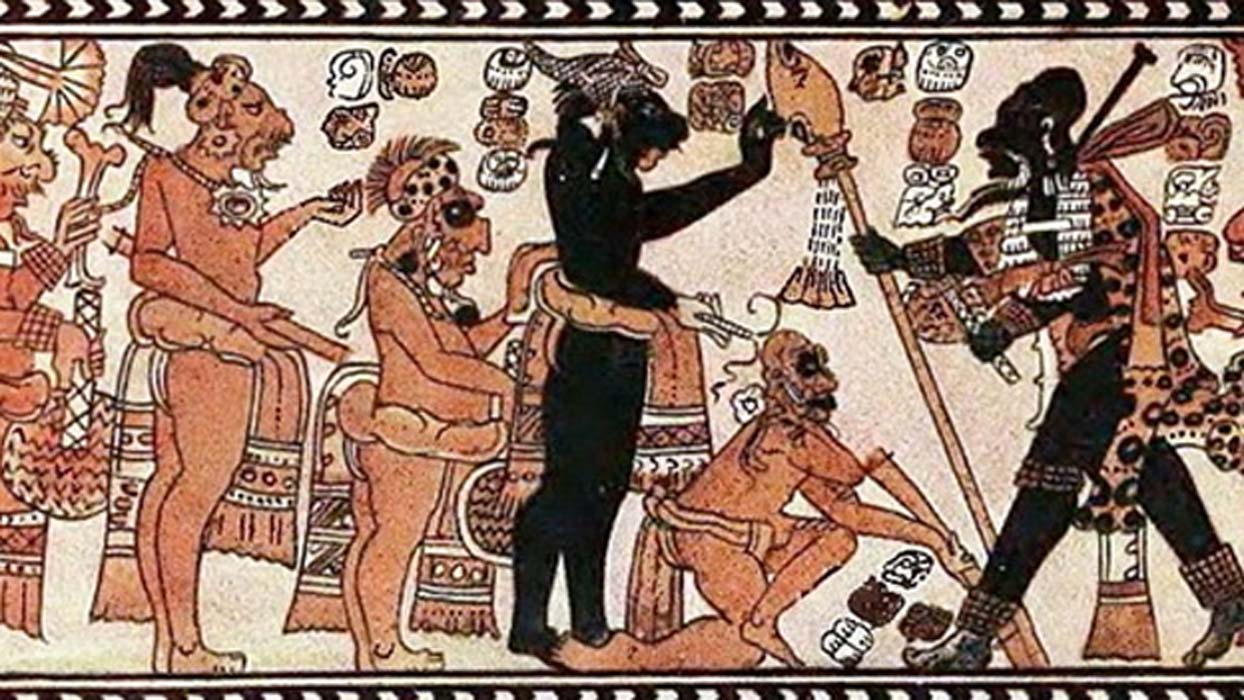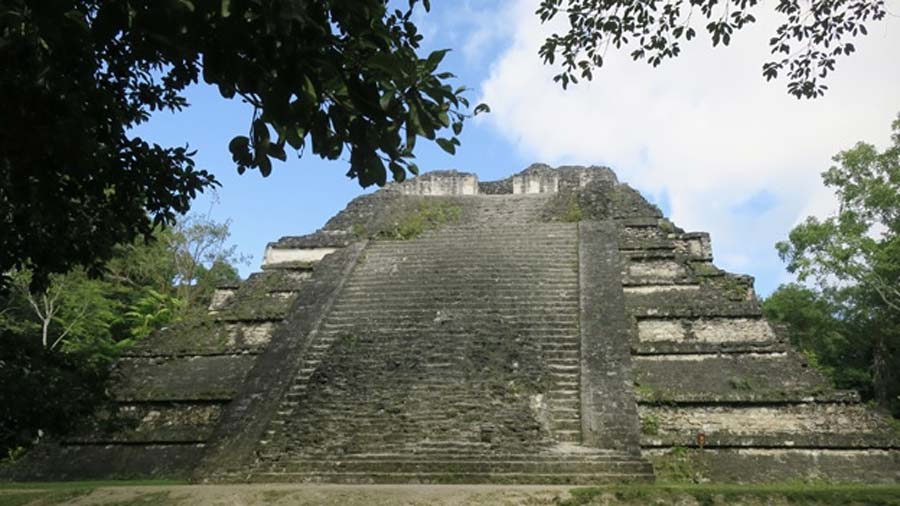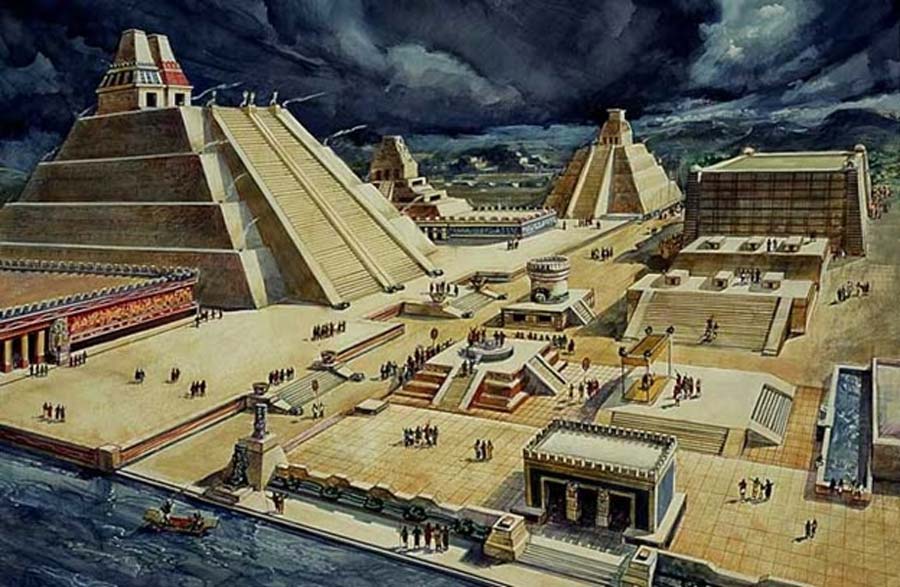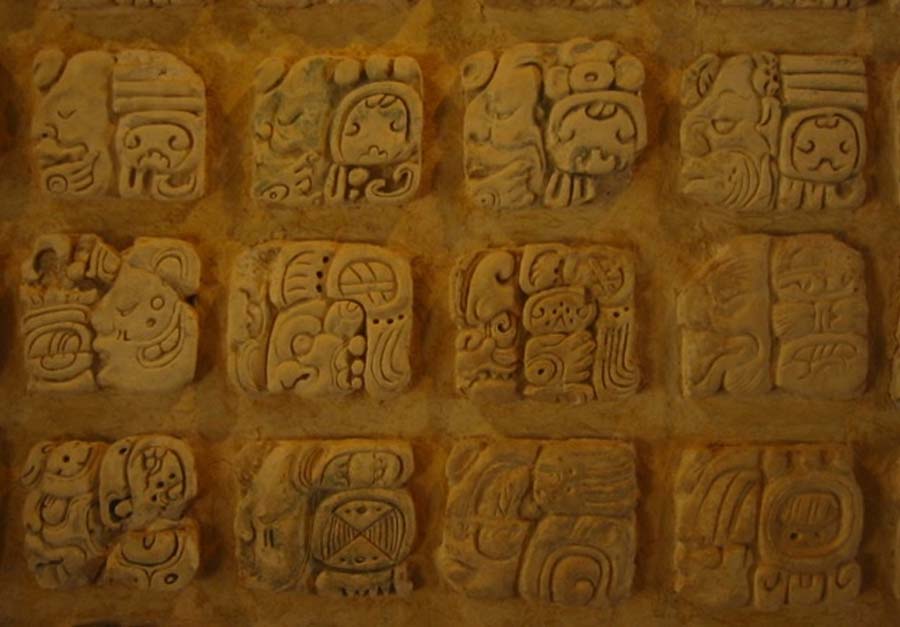
Can the Mayans be Dated to the Younger Dryas Ice Age?
How does a story one is told, or that one has read in a textbook become irrefutable historical fact?
Everyone knows the Mayans were a terrifying civilization, steeped in long range calendars, ballgames, pyramids and human sacrifice. They inherited many of these traits from a culture called Olmec, frequently called the ’Mother Culture’ of Mesoamerica, because they gave birth to what became the Mayans, the Aztecs and the Toltecs. The Mayans flourished between 300 to 950 AD and were followed by the Aztecs, who were in power when the Spanish arrived. This is the traditional story, but how much of it is factual?

Tikal National Park - Petén Basin, Flores, Guatemala UNESCO World Heritage Site (CC BY-SA 4.0)
Mayan architecture is, indeed, spectacular. Tourists flock to be overwhelmed at the sight of the long, steep stairs and monumental extravagance of ruins such as Tikal or Ceibal. When carbon dating and other methods were used to date those structures, traditional history was cast in stone. Even now, if one looks up these magnificent temples in any standard text or Internet site, one will find authoritative statements listing date of construction and occupation, purpose, general description and date of demise. It sounds so official that it is hard to argue about whether or not it is all true.

Drawing of what part of Tenochtitlan may have looked like (Public Domain)
Digging Deeper Professor Inomata
But Takeshi Inomata, a professor of anthropology at the University of Arizona, had problems with the traditional story. Pyramids as complex and sophisticated as these do not just spring into existence. A civilization does not wake up one fine morning and say: "Let's build a pyramid!" So, Inomata decided to dig deeper. He began to excavate under the visible remains at Ceibal to see if there was evidence of earlier building. What he found was that his predecessors - the ones who wrote the textbooks and composed the traditional story - had drawn their conclusions much too quickly. There was a more complex story to be discovered. Inomata decided to ignore what he had been taught and assumed that what one sees on the surface is simply a later construction built on the remains of a much earlier ritual site. Inomata found signs of an earlier complex that dated to at least 1000 BC. But that work, also, was too complex to have just sprung into existence overnight. There were hints that a larger civilization, much more sophisticated than anyone had previously thought, preceded the earlier one as well.
The ‘Classic Mayan’ civilization now gave way to the ‘Pre-Classic’ Mayan civilization, a complex time that features evidence of agriculture on a huge scale, complex architecture and complicated, ritualized daily life. A diet of turkey, corn, sweet potatoes, tomatoes, beans and squash originates from the Mayans. They were the first to cultivate all of these produces. Chocolate bars containing peanuts, both come from Mayan culture, so do chili peppers, vanilla, sunflower seeds and papaya. A cotton shirt is a Mayan invention. Likewise, so is smoking tobacco of any kind, which was cultivated first by the Mayans.





